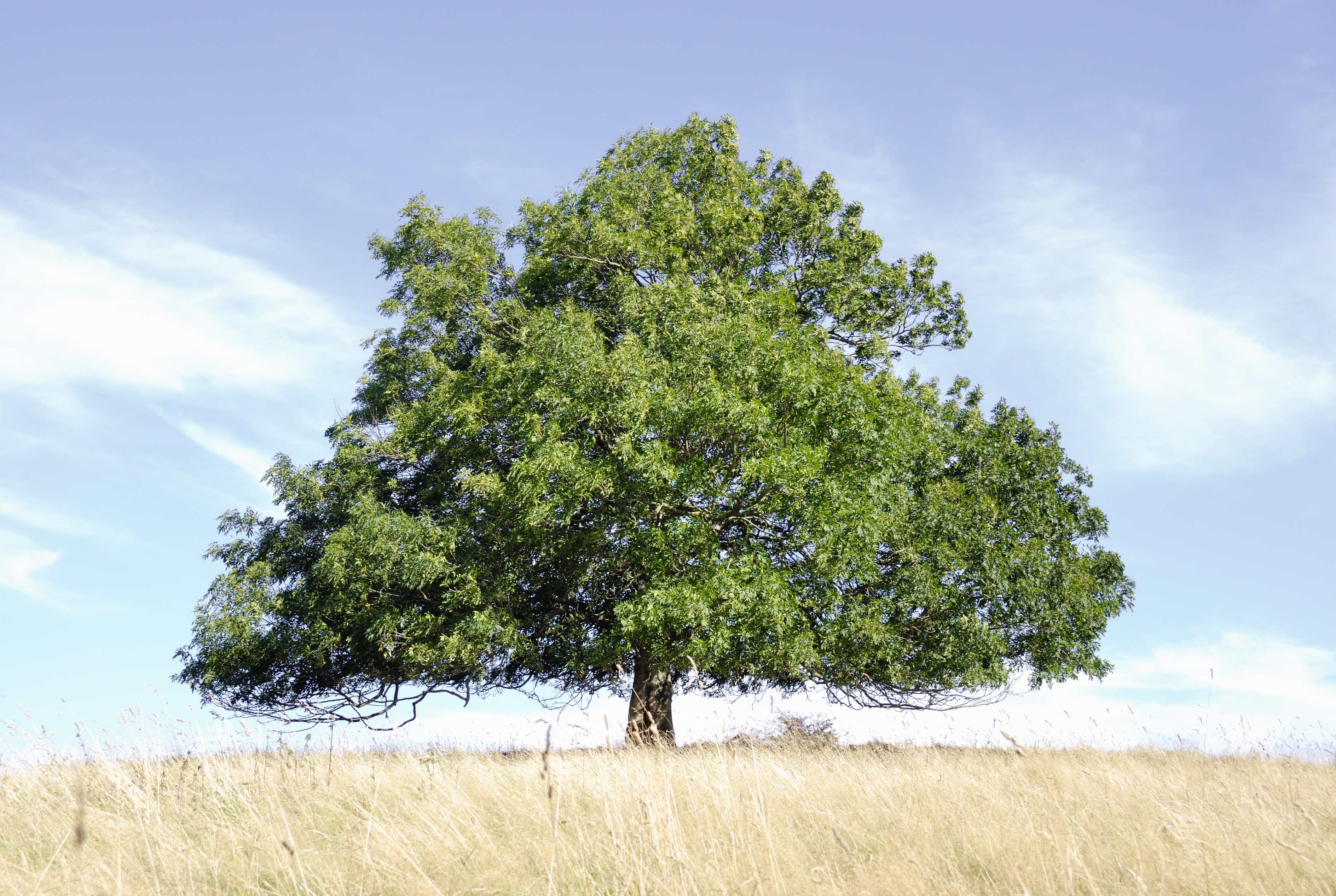Hope from the ashes: This new generation of ash trees is more resistant to dieback
When ash dieback first arrived in Britain, in 2012, an emergency COBRA meeting was formed. The disease has since spread rampantly across the countryside, but there is still hope.


In a rare, real-world example of Charles Darwin’s theory, a new generation of ash trees is evolving genetically, making them more resistant to ash dieback, finds a new study undertaken by scientists at the Royal Botanic Gardens, Kew and Queen Mary University of London. This natural selection is manifesting in thousands of locations within ash tree DNA, says the paper, published in Science, offering a huge amount of hope for the future of the species.
When ash dieback, caused by the fungus Hymenoscyphus fraxineus, first arrived in Britain in 2012, an emergency COBRA meeting was formed and the disease has since spread rampantly across the countryside. It is predicted that up to 85% of our ash trees will perish — a tragedy that now comes with the small silver lining of ‘a revelation for scientists,’ says Richard Nichols, professor of Evolutionary Genetics at Queen Mary University of London. ‘Our detection of so many small genetic effects was possible because of the exceptional combination of circumstances: the sudden arrival of such a severe disease and the hundreds of offspring produced by a mature tree.’
Country Life Gardens Editor Tiffany Daneff explains how, like many of us, she has ‘visited so many gardens where ash have had to be cut down — hundreds went along the stream at Evenley Wood Gardens in Northamptonshire, for example, and many at Glyndebourne in East Sussex — and, even though this has offered opportunities for new plantings of different species, garden owners across the country will be greatly encouraged by this development’.
Richard Buggs, senior research leader at Kew and professor of Evolutionary Genomics at Queen Mary University of London, adds: ‘We are so glad that these findings suggest that ash will not go the way of the elm in Britain. Elm trees have struggled to evolve due to Dutch elm disease, but ash are showing a very different dynamic because they produce an abundance of seedlings upon which natural selection can act when they are still young. Through the death of millions of ash trees, a more resistant population of ash is appearing.’
However, although this is hugely positive news, it may not be enough to save the ash tree altogether and we have a lot of work to do. ‘The existing genetic variation in the ash population may be too low, and as the trees become scarcer, the rate of selection could slow. Human intervention, such as selective breeding and the protection of young trees from deer grazing, may be required to accelerate evolutionary change,’ explains Dr Carey Metheringham, whose PhD research included this study.
Defra has invested more than £9 million in ash dieback-related research since 2012, including the funding of this study, which was carried out at the Woodland Trust’s Marden Park wood in Surrey.
Exquisite houses, the beauty of Nature, and how to get the most from your life, straight to your inbox.
Annunciata is director of contemporary art gallery TIN MAN ART and an award-winning journalist specialising in art, culture and property. Previously, she was Country Life’s News & Property Editor. Before that, she worked at The Sunday Times Travel Magazine, researched for a historical biographer and co-founded a literary, art and music festival in Oxfordshire. Lancashire-born, she lives in Hampshire with a husband, two daughters and a mischievous pug.
-
 Audi has been designing icons for 60 years. Here are some of the best
Audi has been designing icons for 60 years. Here are some of the bestFrom the first Quattro, to the TT and the R8, Audi has always been able to turn a head. Adam Hay-Nicholls, our man in Rioja, explains why.
-
 Haute dogs: How fashion’s finest would dress 11 dogs and one very spoilt cat if only they had the chance
Haute dogs: How fashion’s finest would dress 11 dogs and one very spoilt cat if only they had the chanceWe’ve matched some much-loved breeds to the designers that share their history, temperament and vibe — because why not. Illustrations by Tug Rice.
-
 Haute dogs: How fashion’s finest would dress 11 dogs and one very spoilt cat if only they had the chance
Haute dogs: How fashion’s finest would dress 11 dogs and one very spoilt cat if only they had the chanceWe’ve matched some much-loved breeds to the designers that share their history, temperament and vibe — because why not. Illustrations by Tug Rice.
-
 Baby, it’s cold outside (even if you have a natural fur coat): How our animals brave the winter chill
Baby, it’s cold outside (even if you have a natural fur coat): How our animals brave the winter chillWhen the temperature drops, how do Britain’s birds, beasts and plants keep the cold at bay? John Lewis-Stempel reveals Nature’s own thermals.
-
 Retro rubbish: Waste from the 90s unearthed in 97-mile-long beach clean
Retro rubbish: Waste from the 90s unearthed in 97-mile-long beach cleanThe 6,482 volunteers unearthed waste discarded decades ago among the 232,229 pieces of litter recorded during the initiative.
-
 Yorkshire’s bravest and most charming gentleman — the Airedale terrier
Yorkshire’s bravest and most charming gentleman — the Airedale terrierBred on Yorkshire’s riverbanks to face otters, snakes and even enemy fire, the Airedale has gone from the trenches of war to the hearts and homes of presidents and movie stars.
-
 Dangerous beasts (and where to find them): Britain's animals that are best left alone
Dangerous beasts (and where to find them): Britain's animals that are best left aloneJohn Lewis-Stempel provides a miscellany of our otherwise benign land’s more fearsome critters.
-
 A true gent lets his hair down on a Wednesday: Inside our Savile Row party to celebrate the publication of Gentleman's Life
A true gent lets his hair down on a Wednesday: Inside our Savile Row party to celebrate the publication of Gentleman's Life'The party marked the ten-year anniversary of Gentleman's Life and it was, fittingly, a party for the ages.'
-
 From the Caribbean with love: The other James Bond who wrote the definitive guide to tropical birds
From the Caribbean with love: The other James Bond who wrote the definitive guide to tropical birdsThe Caribbean plays host to a brilliant spectrum of colourful avians, says John Lewis-Stempel, as he revels in a birdwatcher’s paradise. Illustrations by Annabelle King.
-
 Best in class: This year's Georgian Group Architectural Award winners revealed
Best in class: This year's Georgian Group Architectural Award winners revealedThe Georgian Group’s Architectural Awards, sponsored by Savills, attracted another outstanding crop of entries this year. We reveal the winners, as chosen by a panel of judges chaired by Country Life's Architectural Editor, John Goodall.
